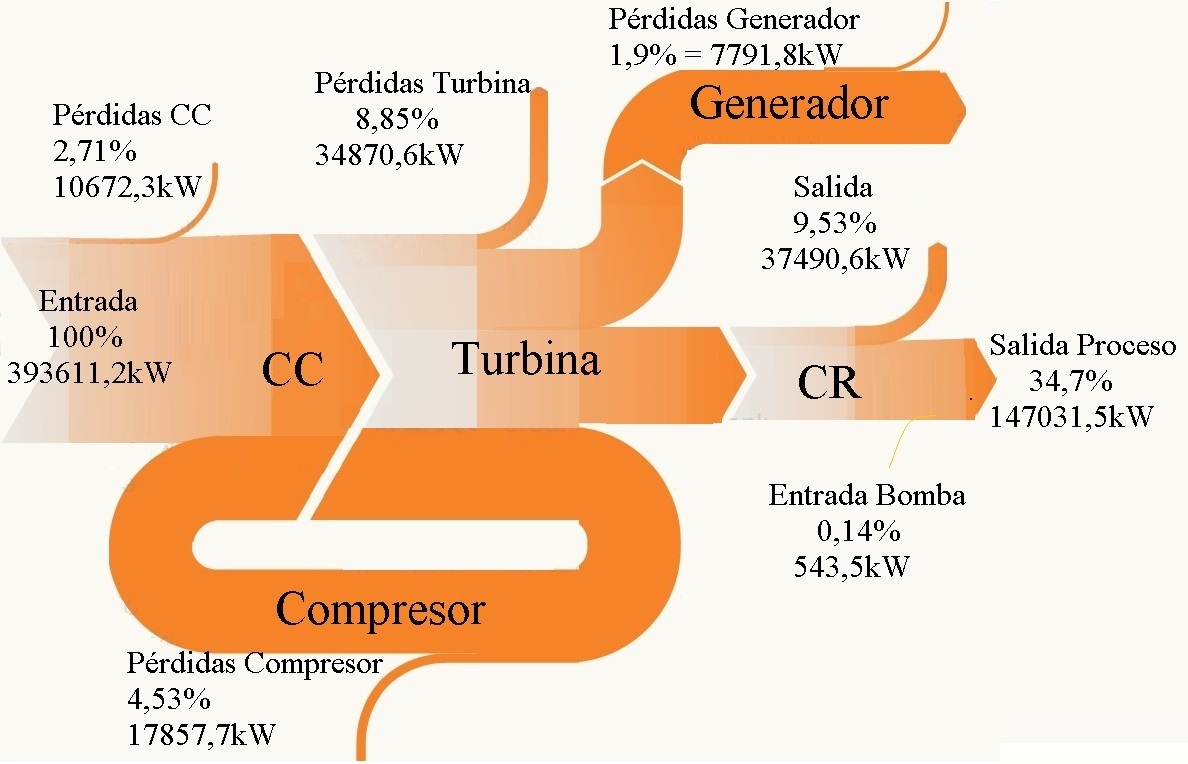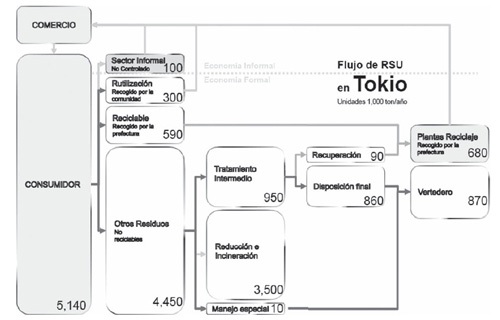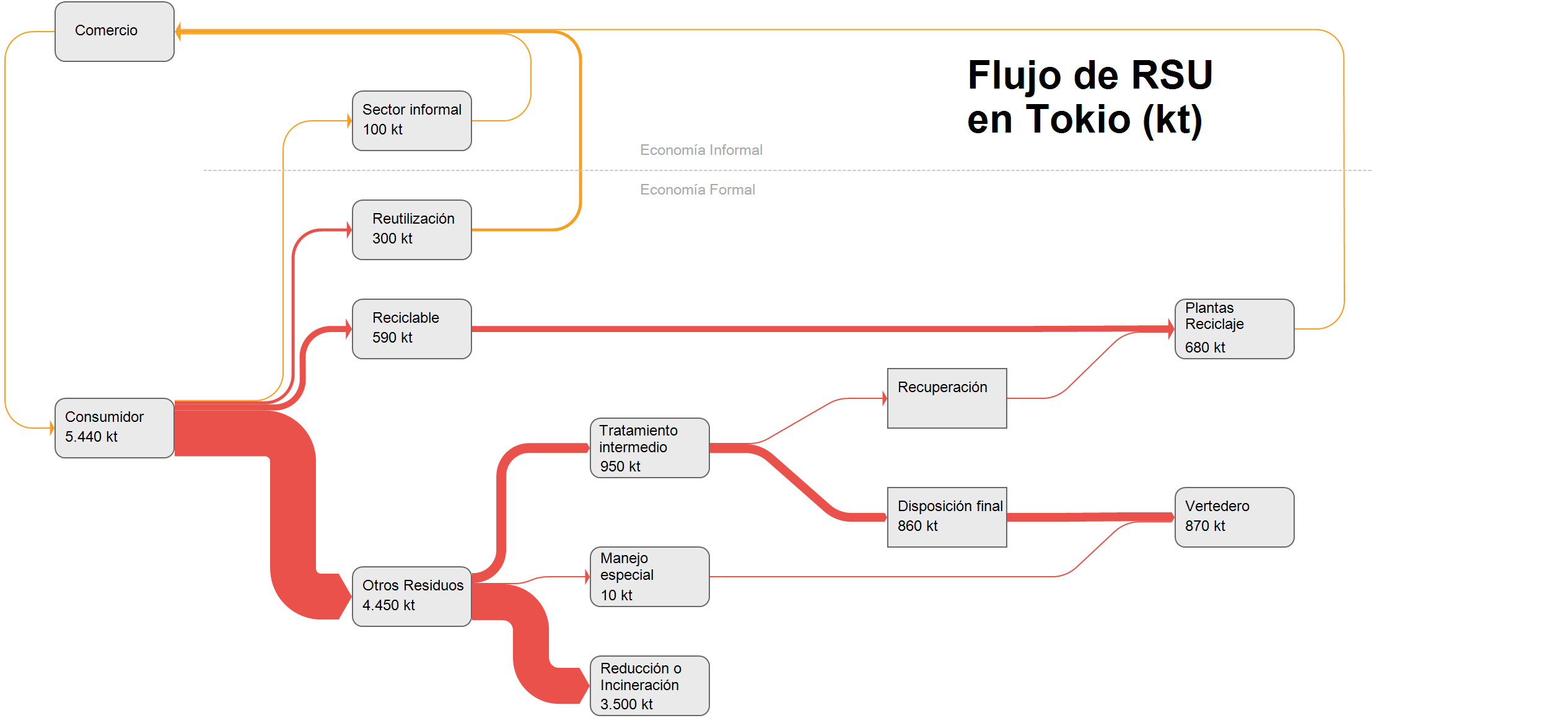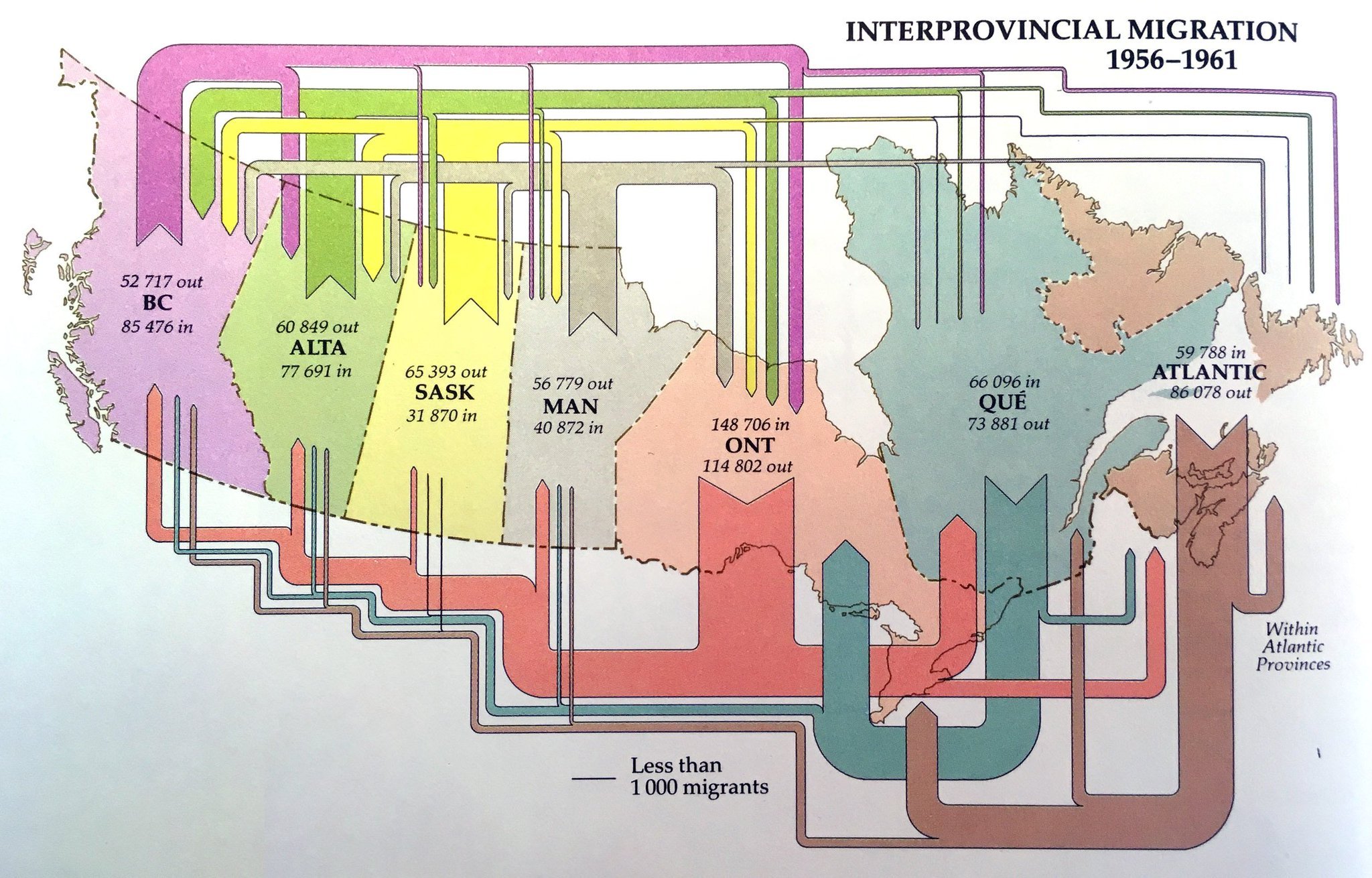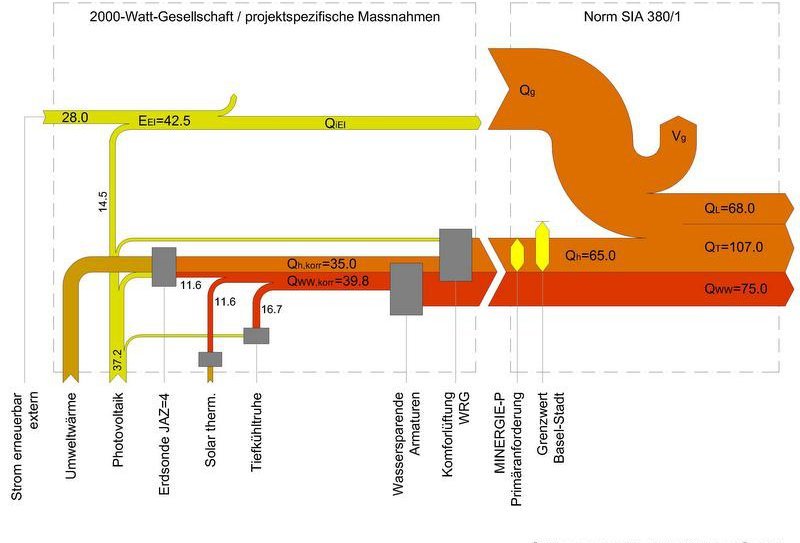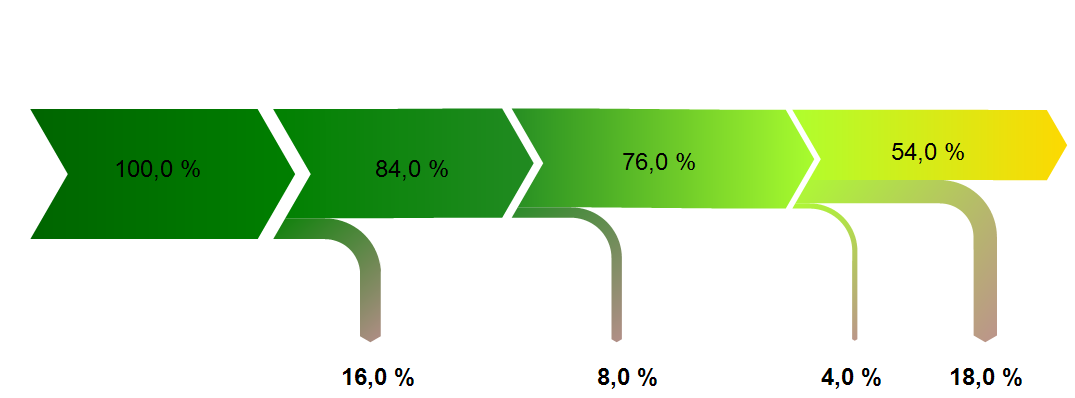From the museum of Sankey diagrams, here is a black&white classic. This Sankey process diagram for rapeseed oil production is taken from the year 2002 dissertation ‘Simultane Öl- und Proteingewinnung bei Raps’ (Simultaneous oil and protein production from rapeseed) by Andreas Waesche, Berlin Technical University.
Flows are in kilograms per ton of rapeseed input. Black is the water fraction, dark gray is oil, and light gray is oil free dry matter. Rapeseed husks, filtered matter and liquid rejects branch out on arrows to the right. Extract from the T4 separation stage (‘Extrakt als Ruckfuhrung’) is fed back into the second node although this loop is not shown here.
